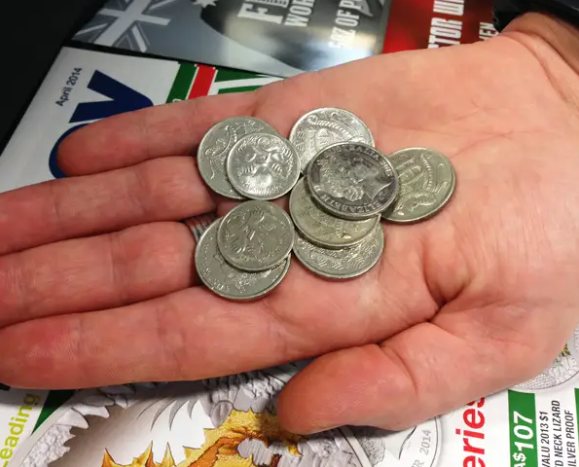The following was penned by Downies employee Jimmy...
As you may know, there are quite a lot of rare, unusual circulating coins that are hotly pursued by collectors. This had a lot of people asking (along with myself), what else should we be looking for in our change? What might some of these circulating oddities be worth?
These questions have inspired a new series of blog posts from me, and, as I continue to search through my change, I will keep you up-to-date about what I'm looking for – and, in turn, what you should keep an eye out for! The coins that will feature in these posts are all found in circulation in Australia, meaning that you, the reader, have just as much chance of finding them as I have! My chances are slightly less now of course, as there are more people out there looking!
I thought I would start from the bottom and work my way up, starting with 5c and 10c. When it comes to Australian circulating coins, it appears that the 5c and 10c coins are the most consistent in terms of quality and lack of errors. This would have partly to do with the fact that there are no commemorative coins issued for either of these two types. The only varieties known are created as a result of die variations.
Chronologically, the very first coin that collectors look for would be the 1972 5c piece. There are two possible reasons to keep a look out for this particular year. Firstly, only 8.3 million 5c coins were minted in 1972, well below the number normally minted (ranging from 25.2 million in 1978 to a whopping 305.5 million in 2006). Upon closer inspection of this particular date, it seems that two separate dies were used in the minting. When compared side by side, one coin appears to have a ‘low’ echidna, with the design close to the bottom of the coin, with the other distinguished by a ‘high’ echidna, with a larger space below the design. The ‘low’ echidna appears to be the scarcer of the two types, and is the one to look out for as it will have a slightly higher value than its ‘high’ brother.
For those of you who don’t want to be measuring echidnas, this brings us to a different variation to look out for. One that may be slightly easier to spot (albeit with a magnifying glass) involves Stuart Devlin, the man behind the designs on the majority of Australia’s traditional circulating coinage. More specifically, his initials feature on the very bottom of the 5c reverse design, of which there are three different types – large, small and tiny! While people may not see this as a major collectable, large SD initials on a 1991 dated coin can fetch up to $40 when found – which is a great return on a 5c investment!
Two other key dates to keep an eye out for are 1985 and 1986. Any of our eagle eyed followers would be jumping out of their seats right now yelling “that’s not possible!”, and they would be right. No 5c coins were minted for general circulation in either of these years, and if you find one, it would have come from the 1985 or 1986 Mint Sets from the RAM. Neither date should ever be found in change.
Now we move onto the 10c piece which, unfortunately, does not have much to look out for. Low mintages are our best bet here. The 1985 10c coin, with a mintage of 2 million, and the 2011 10c issue, with a mintage of 1.7 million, are the two gems. Besides those, there are, of course, the mint set only dates of 1986, 1987, 1995, and 1996.
So get out there and start checking your change, but more importantly, check back here soon for my next post in this series, which will focus on the 20c piece!





